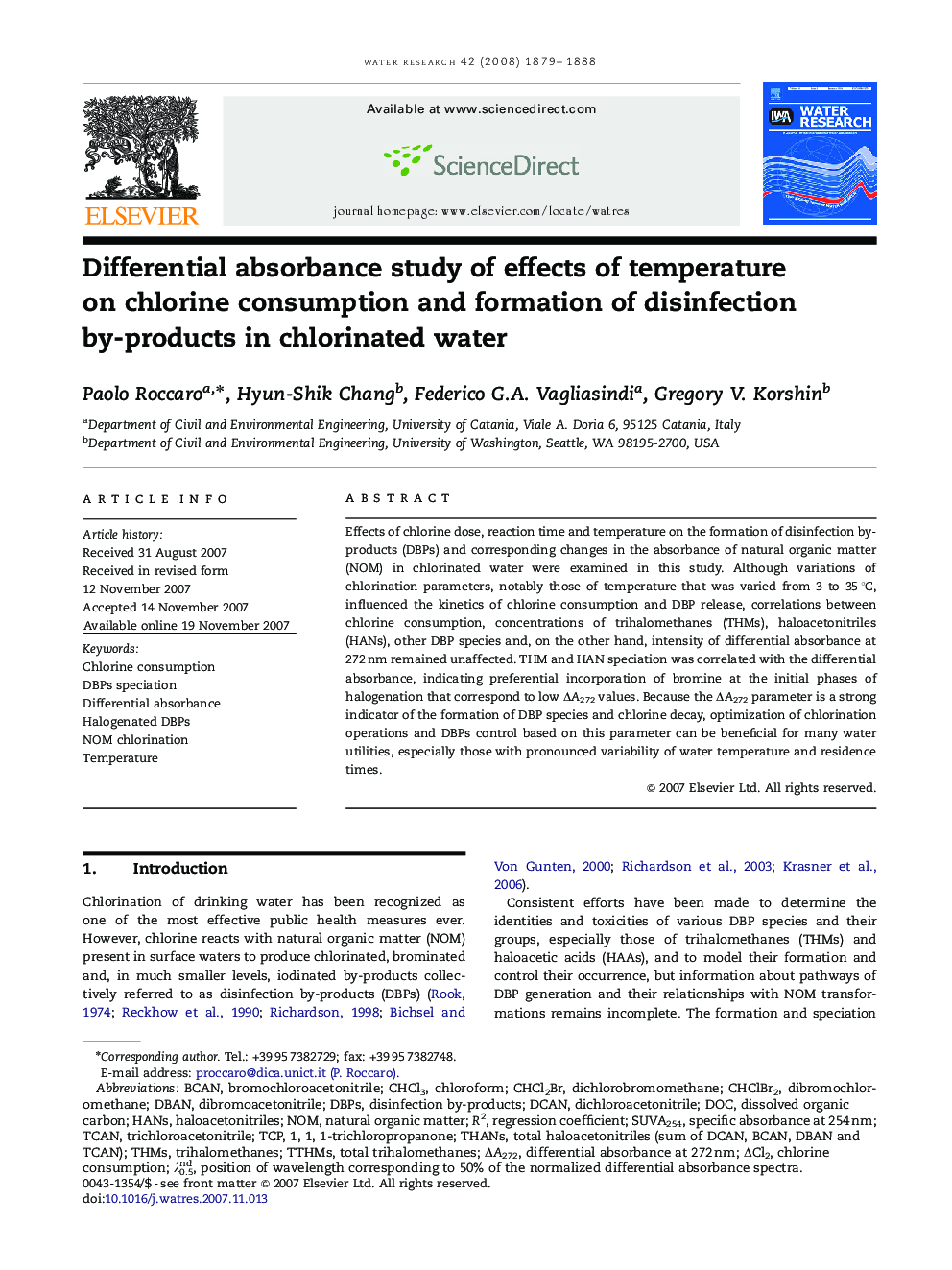| Article ID | Journal | Published Year | Pages | File Type |
|---|---|---|---|---|
| 4484915 | Water Research | 2008 | 10 Pages |
Effects of chlorine dose, reaction time and temperature on the formation of disinfection by-products (DBPs) and corresponding changes in the absorbance of natural organic matter (NOM) in chlorinated water were examined in this study. Although variations of chlorination parameters, notably those of temperature that was varied from 3 to 35 °C, influenced the kinetics of chlorine consumption and DBP release, correlations between chlorine consumption, concentrations of trihalomethanes (THMs), haloacetonitriles (HANs), other DBP species and, on the other hand, intensity of differential absorbance at 272 nm remained unaffected. THM and HAN speciation was correlated with the differential absorbance, indicating preferential incorporation of bromine at the initial phases of halogenation that correspond to low ΔA272 values. Because the ΔA272 parameter is a strong indicator of the formation of DBP species and chlorine decay, optimization of chlorination operations and DBPs control based on this parameter can be beneficial for many water utilities, especially those with pronounced variability of water temperature and residence times.
